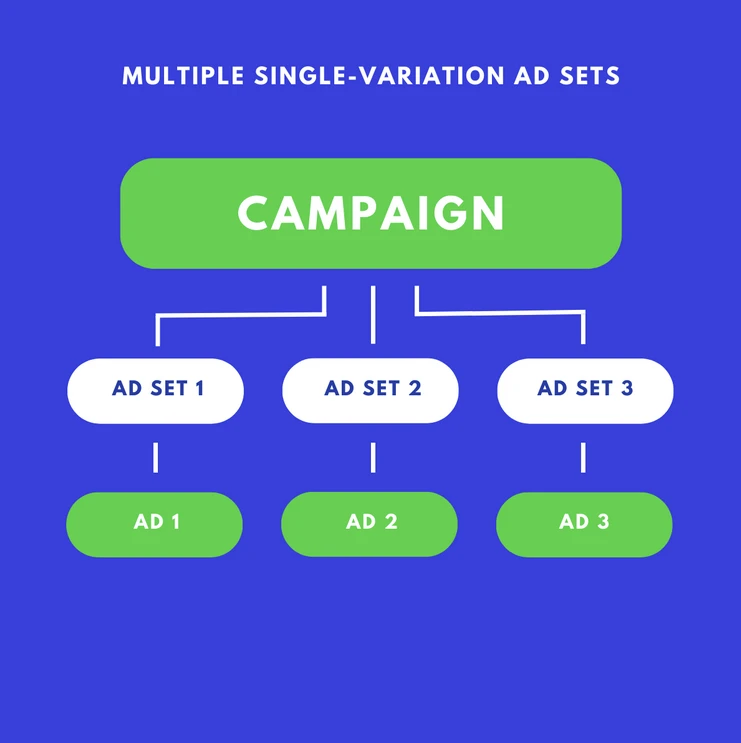Running ads, especially Facebook ads, is simple but quite tricky. Most inexperienced brand social media managers or company digital marketing officers rely heavily on boosting and praying to the universe it will create rewarding conversions.
However, not all marks are consistently hit and it’s always back to the drawing board wondering which part of the ad didn’t bode well with audiences. Good news is there is what we call A/B testing.
What is A/B testing?
Before running any ads, it’s best to test the waters of the digital sphere. Many digital-first initiatives, including ad placement through social media, use drafts and experiments to check for better options and what changes can still be made to make a brand’s ad stand out and work effectively.
A/B testing, also called “split test,” allows you to compare two versions of an ad strategy by changing variables like ad images or graphics, ad text, audience, or placement. Each version is presented separately to a particular group or demographic of your audience, each group not seeing the other; then, determine which version performs better in terms of clicks or engagements.
Instead of running different versions of your ads, you show the same ad with the same context to a variation of audiences to see which gets a better response.
Results sometimes conclude that one ad format may look pleasing to others, while another ad format may show insensitivity or just plain confusion.
Things to consider on A/B testing:
A. Avoid testing multiple variables at a time.
Though sometimes we want to immediately see the greater picture, to start testing everything all at once is a NO. A common mistake made by digital marketing rookies is creating an A/B test with too many changing variables.

Remember that fewer ad variables means quicker, precise, and relevant test results. Moreover, testing a single ad variable per experiment will make it easier to track and evaluate the result.
B. Focus on what you should be testing.
Of course if there is a test, there should be objects of the test within the ad being tested.
A/B testing allows us to test over hundreds of different elements of an ad. But what you need to focus on are key features that play relevant results for your click through rate (CTR) when optimized. These includes:
1. Headline
Keep headlines brief and interesting. Read and check how it sounds when the audience reads it? Adjust the tone based on your target audience or followers. Does it align with your aim?
2. Call-to-action (CTA)
A very important element as it hooks clicks you need for conversion. Believe it or not but the style of the button actually has an impact on its clickability. Test colors, the font, the language, and more. Moreover, it also helps to check if having the button or not has relevance.
3. Image and graphics
Your image should be comprehensible and compliments your headline and copy. Check- is the image plain? Is it too complicated? Does it need a human model to show action and relatability? Does it need more than two models? Would it be better in grayscale or in vivid colors?

4. Copy
Sometimes short-form copies, even with just one sentence works, yet there are those that require long-form to better explain an ads point, especially that with technical terms or narrative structure.
5. Landing page and accompanying forms
Usually not used a lot- but landing pages and those with fillable forms are tested based on their length, design, and ease in answering. Adding multiple choices is often fair than those where you have to type in answers.
Moreover, another element to focus on is color – red colors sometimes scare people more than create an atmosphere of urgency, green and blue are calming and denote trustworthiness and security.
C. Use the right campaign (for Facebook) structure.
A/B testing is a structured approach with well-defined end goals. That’s why it’s one of the most straightforward approaches and tools for making great brand digital marketing campaigns. Still, as any human does, we
overcomplicate even the simplest of structures. An example is testing through Facebook. Initiating a test with multiple Facebook ad designs and other in-ad elements, you’ve got two options for structuring your A/B test.

1. Single Ad Set – all ad variations are incorporated in a single ad set.
Facebook will start to auto-optimize your ads the moment you input all your tested Facebook ad variations in a single ad set. However, you won’t get relevant testing results just yet.

1. Multiple Single-Variation Ad Sets — individual ad variation is incorporated in another ad set.
Here on the second structure, where all your ad variations are placed into separate ad sets, notice how each has determining factors unique and comparable to the other, allowing for better results and more precise conclusions.
D. Always validate your A/B Test results.
The first step in validating your A/B test results is to repeat the test several times to map out any changes, determine the consistency of the perfect ad format, and set you will run. You need to have a sufficient amount of results to conclude from.
Thrice would suffice. After that, you’d be wondering how to ensure your results are valid? Well, good thing there is what we call A/B significance test – there are multiple sites available that can calculate your results through an A/B significance calculator.

E. Do not run your test for too long.
Running your A/B test even after you have reached statistical significance makes it more vulnerable to external factors; these can cause unnatural spikes in traffic and behavior.
Remember the goal is to determine which ad set is better to use. Not to check data or get results beyond the original aim. Doing so you could end up with constant testing and irrelevant results.
Ready to do A/B testing?
Always bear in mind that A/B testing is helpful as it can:
Moreover, be confident in the statistics and always know that when it comes to social media and digital marketing, there will always be opportunities and avenues to check to better market your brand and reach people.
If you still want to know more or learn about A/B testing and ad strategies for social media.Book a FREE 30-min. strategy call today!




